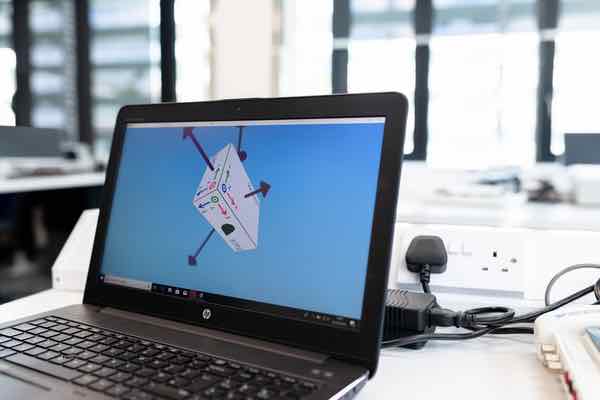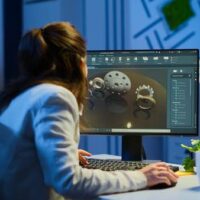Enterprise Resource Planning (ERP) is an innovation that enables you to integrate all the core aspects of your business, from finance to human resources to sales to manufacturing and many other departments.
This article focuses its discussion on the manufacturing aspect of your business. The manufacturing process has various stages, from design to production. As a company, how does integrating ERP with your Computer-Aided-Design (CAD) process benefit your manufacturing business?
This article answers this question for you, so read on! CAD-ERP integration:
1. Improves Productivity
Productivity is a desired aspect by most business owners, despite their area of specialization. This is because productivity often leads to more returns that translate to high profits. As a manufacturing company, how will CAD-ERP integration improve productivity? The answer is simple; automation. This integration eliminates manual data entry.
Your engineers will spend less time worrying about when they’ll input data into the system. They’ll instead focus on developing designs all day. With this, you’ll make more designs in a day, reducing your production time. You’ll manage to meet your customers’ needs on time, increasing their satisfaction.
There are many other ways that ERP solutions, such as sage eCommerce, will automate your operations. Make Google your friend and find out more about these solutions.
CAD-ERP integration also eliminates the wait time between departments as they request data. ERP integrates all the departments such that they all have access to the same data. Real-time data update adds to the efficiency. This means that anyone can access data whenever they need it, reducing downtime and increasing productivity.
2. Improves Design Quality
Quality is a crucial component when it comes to designs; you want to manufacture the design as is without any errors to ensure it fully meets the needs of its end users. To create layouts, your engineers require data. This data is often the source of many errors in designs, especially where there’s manual data entry.

By integrating ERP with your CAD, data entry errors are significantly reduced since your team updates the data in real-time, and the system does it automatically. This eliminates situations where your workers come again later to enter data in your systems. Therefore, your design team will rely on accurate data to develop designs, ensuring the final product is of high quality.
3. Allows For Collaboration
Independently coming up with designs can be challenging since there’s a possibility of missing out on something. This is why most designers in the manufacturing industry work together to develop the final design.
As a team, you’ll pinpoint errors and even make suggestions for a better design. Without CAD-ERP integration, an engineer has to visit the other to get access to the documents physically, or you need to send them physically to them, which can become a security issue during transit. This wastes a lot of time, and some designers might decide to forego the collaboration process, which isn’t desirable.
However, collaboration is more accessible by integrating CAD with a cloud ERP solution. Once an engineer finishes the design, they can upload it to the cloud, where another engineer with access can get access to the document from wherever they are.
They’ll then modify the design as necessary. The benefits of a cloud-based ERP are that you can gain insight into your designs even from experts, not necessarily in your company. With all these experts’ input, you’re more or less assured the final design and product will not lack quality.
CAD-ERP integration also enables you to collaborate with your clients. Before manufacturing a prototype, the client can access the design through the cloud from wherever they are and request changes as they deem necessary. This is until they approve the design, after which you’ll proceed to the next stage of developing the prototype.
If you’re worried about unwarranted changes to the design, especially when you share it with parties, not in the design team, it’s time to relax. ERP solutions allow you to control editing by sending designs as read-only.
4. Allows Better Production Planning
When developing designs, you want to do this knowing that you’ll get a market for your final products. CAD-ERP integration makes planning better. ERP solutions can formulate sales predictions based on your recent past data.
With the forecast, you can see the goods moving and those doing poorly in the market. This knowledge can help you know if it’s the right time to develop new designs and what products to build next.
The predictions give you control over your production; you won’t produce in excess or undersupply the market. You’ll meet your customers’ needs as they desire them. In the long run, you’ll save resources since there’ll be no wastage, especially with overproduction.
Conclusion
The discussion above has highlighted how you stand to benefit as a manufacturing company once you adopt CAD-ERP integration.
With this information, you’re better placed to decide whether to adopt this integration or not. However, it’s good to point out that the decision lies with you; make the right one.


